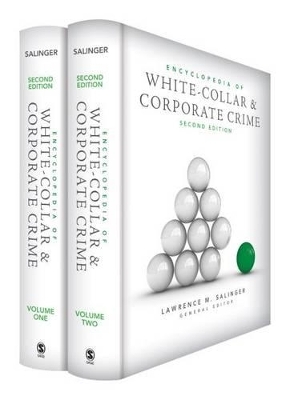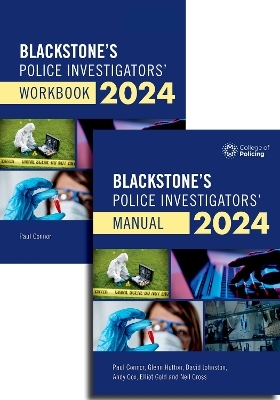
Encyclopedia of White-Collar and Corporate Crime
SAGE Publications Inc
978-1-4522-2530-2 (ISBN)
Since the first edition of the Encyclopedia of White Collar and Corporate Crime was produced in 2004, the number and severity of these crimes have risen to the level of calamity, so much so that many experts attribute the near-Depression of 2008 to white-collar malfeasance, namely crimes of greed and excess by bankers and financial institutions. Whether the perpetrators were prosecuted or not, white-collar and corporate crime came near to collapsing the U.S. economy. In the 7 years since the first edition was produced we have also seen the largest Ponzi scheme in history (Maddoff), an ecological disaster caused by British Petroleum and its subcontractors (Gulf Oil Spill), and U.S. Defense Department contractors operating like vigilantes in Iraq (Blackwater).
White-collar criminals have been busy, and the Second Edition of this encyclopedia captures what has been going on in the news and behind the scenes with new articles and updates to past articles.
Lawrence M. Salinger, Ph.D., is associate professor of criminology and sociology at Arkansas State University. He has earned degrees from the University of California, Irvine; Indiana University; and Washington State University. In addition, he attended the Counter-Terrorism Studies Executive Certificate program at the Interdisciplinary Center in Herzliya, Israel. His interest in the study of crime and criminals began at a very early age when, as a first grader, he read The FBI (1954) by Quentin Reynolds. Salinger’s interests in criminology focus primarily on violent victimization and organizational crime. Organizational crime incorporates three types of criminality: whitecollar and corporate crime, organized crime, and, terrorism. While to the average person these types of crime seem quite diverse, when looked at more closely, they actually have much in common with each other. For example, all three types of crime revolve around hierarchical organizational structures, with defined roles for each type of actor within the organization. Each type of organization, be it a business, an organized crime family, or a terrorist network, has goals or objectives to strive for, although those goals may be different depending upon the type of organization. All three types of organizational crime involve both legal and illegal behaviors committed by the organizations, with both legal and illegal behaviors funding each other. Finally, all three types of crime impact people’s lives in everyday society. White-collar and corporate crime have been of interest to Salinger since he took his first course on the topic from Dr. John Braithwaite at the University of California, Irvine, in the 1970s, and was fueled by the likes of Drs. Gil Geis, Henry Pontell, Paul Jesilow, James F. Short, Jr., and Robert Meier. Salinger’s doctoral dissertation, completed in 1992 at Washington State University, analyzed 98 years of antitrust price-fixing violations. While the findings were less than conclusive, some historical trends were noted. For example, the Sherman Antitrust Act was created to reduce restraint of trade and increase competition in the marketplace. However, during the first decade of its existence, the law was used exclusively to prosecute labor union organizers for strikes again corporations, rather than against crooked corporations themselves. Another example of historical significance was that price-fixing charges against both U.S. and foreign corporations tended to increase in the two to three years before wars, but were then frozen at the request of the Department of Defense (or its predecessor, the War Department) because the companies were crucial to the war effort. After each war, the Department of Justice would drop charges against the American companies, while fully prosecuting the foreign companies.
| Verlagsort | Thousand Oaks |
|---|---|
| Sprache | englisch |
| Maße | 215 x 279 mm |
| Gewicht | 4050 g |
| Themenwelt | Literatur ► Biografien / Erfahrungsberichte |
| Schulbuch / Wörterbuch ► Lexikon / Chroniken | |
| Recht / Steuern ► Strafrecht ► Kriminologie | |
| Wirtschaft ► Betriebswirtschaft / Management | |
| ISBN-10 | 1-4522-2530-3 / 1452225303 |
| ISBN-13 | 978-1-4522-2530-2 / 9781452225302 |
| Zustand | Neuware |
| Haben Sie eine Frage zum Produkt? |
aus dem Bereich
